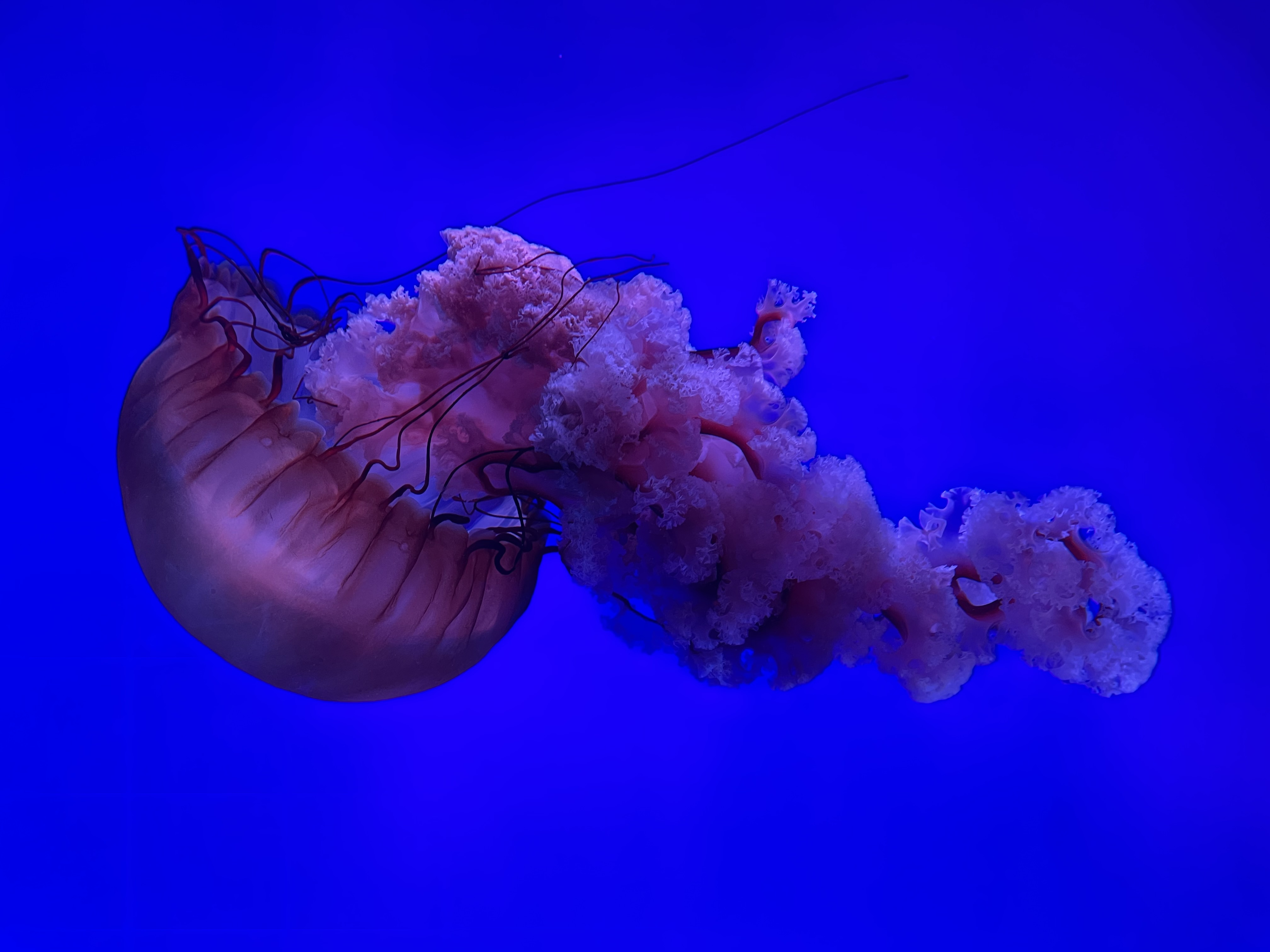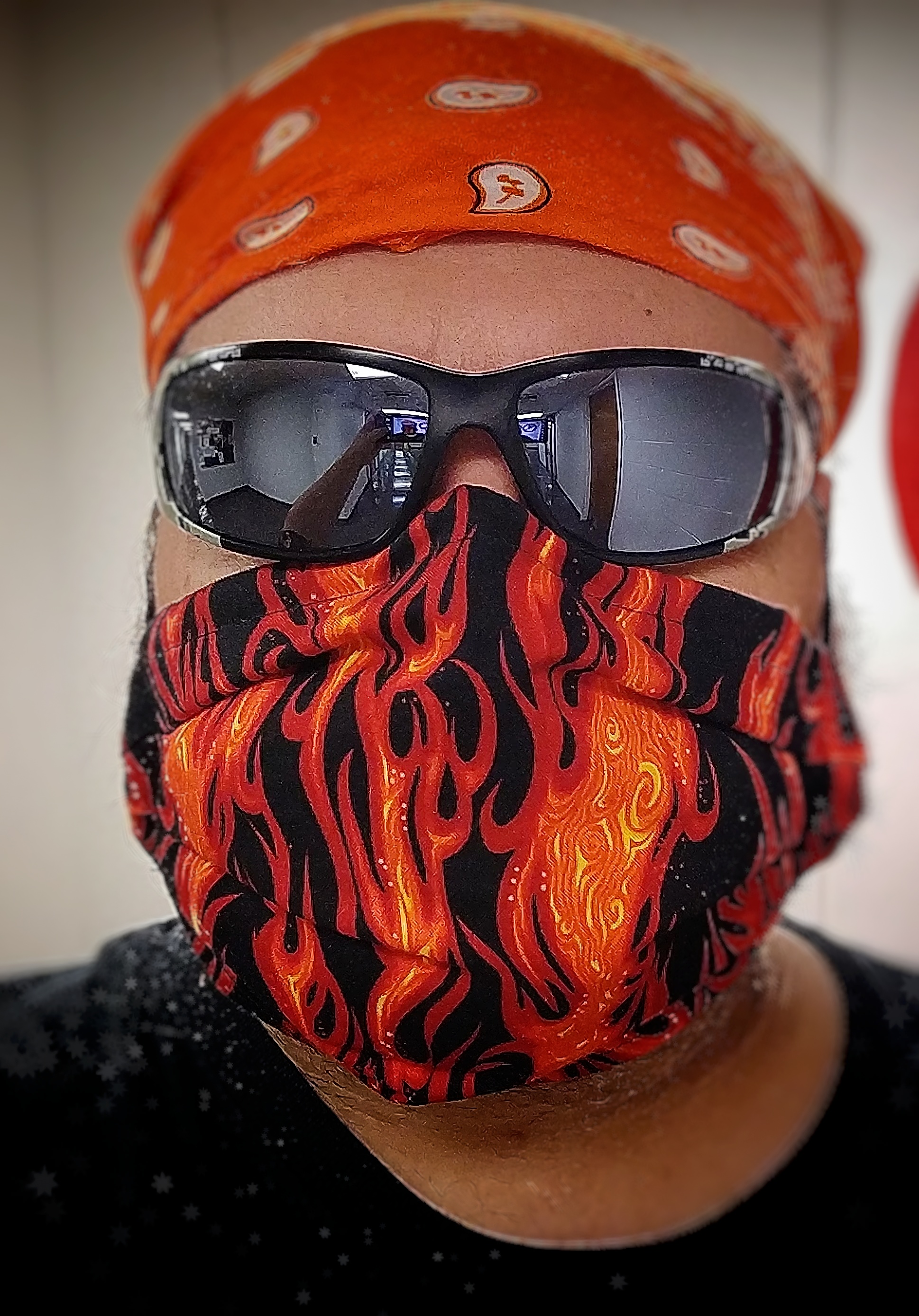I feel like it would be useful to know exactly how much alcohol is in a can or a bottle. Also why is alcohol the only thing measured in percentages and not sugar or caffeine or medicine?
ABV works for all types of packages. It could be helpful to know that a can of beer contains 18.6ml of alcohol, sure, but what about a bottle of whiskey or vodka? Is it better to know that it’s 40% alcohol or 300ml? Should a bar publish that a keg has 4.2 liters of alcohol in it?
With ABV you can compare alcohol across volumes.
I haven’t seen anyone really answer the why of it, which is that the industry developed using a floating glass tool called a hydrometer which measures the specific gravity, or density, of liquids.
When you boil the wort to prepare for fermentation, you end up with a sugary liquid that is denser than water or alcohol. Water has a specific gravity of one, and the specific gravity of the wort is increased by everything you dissolved into it. You would float a glass hydrometer in it and lets say you get a reading of 1.055.
After fermentation the yeast has converted much of the sugar to alcohol and decreased the specific gravity. You measure a second time, and multiply the difference by a constant factor to get ABV. let’s say after fermentation you got a reading of 1.015.
1.055 - 1.015 = 0.04
0.04 * 131.25 = 5.25% ABVWe label with ABV because that was how it was calculated, and remained the same regardless of the quantity served.
There is a similar process for distilling as well. Before these methods people didn’t know the exact amounts, which led to fun things like navy and admiral strength.
Edit: also the 131 figure really should vary based on temperature since it is derived from the ratios of the density of ethanol and water. The higher the ABV the more important it is to factor temperature, and distilling requires more sensitive measurements and tools. But for beer, using 131.25 is fine and has about 0.2% error up to around 10% ABV.
That still doesn’t give us a reason why customers have this special calculated value. You could just multiply the volume by this percentage to get the absolute value. Why is the percentage preferred over the volume? I see no reason for either side.
Like I said, because the percent doesn’t change with the volume served. If you are an 1800s brewer you can calculate the ABV from samples, and subsequently sell kegs of various sizes, bottles, which in turn can be served in various amounts and the percent doesn’t change. And the industry never changed, nor the laws written. So it’s the way it is because that is how they used to do it and how laws were written and there hadn’t been a motivation for people to change that.
In a word - tradition.
Yup.
We do lots of things as a society because we’ve always done them that way, or it’s good enough, and not enough reason to go through the effort of changing everything including legal language, etc.
Happily, in this case I think ABV is about the best way we could have inherited, maybe only second to alcohol by weight in terms of consistency across temperature.
Also, it’s practical. If you know something is twice as concentrated (12% instead of 6%) you know to drink it more carefully, rather than if you get a jug of something and it just says how much alcohol is in there, then you have to mentally calibrate how strong it is by considering the volume of the jug vs. how much alcohol there is.
You have to print a separate label for each bottle size then. Much easier to print something like ‘10% strength’ and slap the same label on all of your barrels and bottles regardless of their volume.
You still have to show total volume on each bottle. So the label is different anyway. Plus, it could have been done as they do to show singer content - amount per serving size and servings per container.
Present age does nearly the same thing though. 20% simply means 20ml in serving size of 100ml.
Because from a consumer’s point of view, the absolute amount isn’t useful when the serving size and the packaging size isn’t fixed. It is straightforward for a 1.75l bottle of whiskey to be the same % alcohol as the 750ml bottle when the absolute volume of alcohol would be different.
X% of the cans volume tells you the exact amount. You can know with very simple math. The reason why is because historically, alcohol drinks are taxed based on the concentration, or percentage, of alcohol. Beer would be taxed at a lower rate than say whisky. It was all based on the percentage, or “proof”, of the beverage, not the actual amount. That way a small and large jug of whisky would be taxed at the same rate.
There are medications that measure the active ingredient as a percentage too, like topical creams. I think it’s done to make the relative strength easier to compare when the volume is varied. Labelling a keg of beer or a barrel of wine with the actual volume of alcohol it contains doesn’t make it easy to tell the amount that would be in a single glass.
I feel like it would be useful to know exactly how much alcohol is in a can or a bottle
They always list the total volume of the liquid so you can easily get the absolute alcohol content with the percentage.
I don’t know, but sugar is usually in “g / 100g” so technically in percentage
In beverages, it’s g/100ml.
Which is basically the same since 1g of water is 1ml.
In water yes, but not in sodas.
The difference is quite small though right? Since a soda is still largely just water with sugar in it.
I would guess about 4% heavier with sugar, which is just enough so that a can of Dr. Pepper sinks while a diet can of Dr. Pepper floats. I think I recall the specific gravity of most sugar flavored soda was around 1.04 but I would need to check sources.
Found a link that confirms it for coke. More specifically 1.042g/ml
Why? Because it’s slightly heavier with all the sugar in it?
Of water, yes, but not of sugar.
Yes but I figured a pretty good approximation. I’m actually curious how much of a difference it would actually make.
A quick google says you can dissolve up to 2g of sugar in 1g of water, so a pretty big difference apparently
Alcohol drinks is vol% around here.
Should be relatively easy to figure out if you know both the total amount of liquid and the percentage of alcohol.
100ml bottle that’s 40% ABV would be 40ml of alcohol.
As a consumer, I think it makes more sense to have the percentage by volume. Firstly, it makes the general pattern of alcohol content much clearer so we get a better intuition of what we’re getting into. Beers generally hover around 5%, wines at 10-15%, and spirits at 20% and above.
Building on that, people don’t generally remember the volume of pure alcohol they can handle, but they do remember, for example, that three glasses of wine is the most that they should drink. If you’re presented beer, then along with your intuition of their relative alcohol content, you can easily approximate that you can handle about twice as much volume since it’s about half the alcohol by volume. And similar if you have spirits, then you can reduce that volume to half or less.
How would you estimate it given a volume of alcohol instead? I know I can handle three glasses of this one particular kind of wine. If I have another type of wine with a different alcohol content and different bottle size, I’ll have to math out how much alcohol will be in my glass: (Volume of glass)*(total alcohol context)/(Volume of wine bottle). Most people would give up before even trying to come up with this formula. Now how much alcohol did I have the last time when I had three glasses of wine? The bottle said something like 80ml of alcohol. But how big was it? That’s two large numbers that you need to remember, and since they’re so different from one bottle of wine to the next, you likely don’t remember any of it.
Secondly, it affected flavour. In general, you can taste how much alcohol is in a certain drink and that depends on the relative volume of alcohol, not the absolute amount.
Since krellor answered the main question:
I feel like it would be useful to know exactly how much alcohol is in a can or a bottle.
- By volume: multiply ABV by the volume of the drink.
- By weight: do the maths above, and then multiply the result by 0.789 g/ml.
RL example: the beer in my fridge is 350ml, 4.7% ABV. Doing the maths this is roughly 16.5ml of alcohol, or 13.0g.
Since everyone pretty much nailed the ABV% answer I’ll take a crack at the other. I’m guessing that the reason they don’t list other ingredients, like what food producers are required to do, is because most countries are concerned about the alcohol content more than anything else that’s in it.
In the US, and I suspect other countries, the agency that regulates alcohol is different than the one that regulates food. In the US alcohol is regulated by the ATF and food by the FDA. Since it is the FDA rules that require nutritional labels and ingredients and not the ATF, most brands don’t list much.
Additionally, alcohol recipes are often considered trade secrets and closely held which might be why rules haven’t been introduced in many places.
Here is an article that talks a little more about different breweries and if they keep their ingredients secret or not.
Years ago, for the US I read the answer was lack of demand from consumers.
Cue ready-to-drink products gaining popularity with newer generations and some have hit the market with nutritional labeling. Would be nice to see it mandatory across the board at this point.
A percentage is going to be more useful to a consumer than a volume anyway, especially for bottles that are consumed in part. 40% tells you a drink is going to be strong, without any further math based on whatever size drink you have poured yourself. If you wanted to know the volume alcohol of a poured drink, you’d have to linearly interpolate according to the size of glass you poured yourself, which is one step beyond just multiplying the alcohol percentage by the volume of the glass.
So in conclusion, labeling the volume of alcohol on a bottle is only practical for beer bottles and prepackaged cocktails, etc. If you do want to know the volume of alcohol consumed, simply multiply the volume of drink consumed by the ABV%.
Don’t most consumables list their volume?
1liter of beverage at 5% ABV is 50ml of alcohol. For example
Australia does this right. Everything has a percentage.
Nutritional panels have:
- Serving size
- Servings in the pack
- Energy, sugar, fat salt. etc per 100ml or 100g, and per serving.
Alcoholic beverages have “standard drinks” per bottle which factors in ABV and volume.
I can quickly see that a drink has 9g sugar per 100ml and know it’s 9% sugar. Easy.
Isn’t this standard everywhere? I know it’s like this in the Netherlands. I assume in America they give you the bald eagle feathers per egg or something too.
America give something useful for customers? No way… /s
So, in a drink you show amount of protein as volume per 100ml?
Here’s a Starbucks Espresso marked as 2g of protein per 100ml and 4.4g per serve.
Therefore, it is not %. One is g., another is ml.
1ml of water is 1g.
I surely hope that espresso is NOT water.
Sucrose has a solubility of about 200 g/100 mL water. I’m in American so I’ve never seen Australian food labels, but would they really label a sugar-saturated drink as having 200% sugar? I guess technically you can do that, but it seems a bit weird. In my experience % is usually reserved for liquid in liquid solutions, like alcoholic beverages.
The best example is the slab ‘o’ Coke from Woolies.
Sugar is marked as 10.6g/100ml and 39.8g per 375ml serve (yes, stupidly large), and 24 serves in the pack.
Syrups are typically sold in grams. But 200g of sugar and 100ml of water would be more than 100ml of total product by volume, and 300g by wileight. If anything, it would be labeled 66% sucrose because it’s one third water.
Wouldn’t it be lower than 8% sugar by volume since sugar is more dense than water?
There are special rules for labelling for alcohol given the obvious risks of consuming more than you realised.
Here alcohol must show the percentage alcohol content, but alcohol designed to be consumed as-is (without mixing) also states the number of standard drinks.
The number of standard drinks is the same as the “amount of alcohol” you mentioned.
Other ingredients like sugar aren’t shown as a percentage because manufacturers don’t want to show it, and it’s not required by law because although there are risks of excess consumption, they’re not “immediate risk to life” type risks.
Yeah, NZ & Aus both have a ‘standard drinks’ system.
My guess is that larger quantities of alcohol (particularly bottles of spirits but also wine) simply aren’t intended to be drunk by one person in one sitting. Total volume of alcohol isn’t that useful; it’s more useful to be able to work out how much is in one shot or one glass.
This is especially important when you look at the same product being sold by the shot/bottle/cask/barrel, or being able to buy a gallon of it in your own container historically.
Yep, in the UK we have both abv and units of alcohol on most drinks. So you can go by whichever makes most sense for you.
Labeling alcohol content by %ABV or %ABW is more versatile than absolute measure. Its also trivial to figure the absolute content given a specific volume.
In the US at least, there are regulations for packaging and labeling enforced by a federal agency. (I think that agency is Alcohol, Tobacco and Firearms (ATF), but I could be wrong.) The label must include the %ABV or proof, and must also specify the volume. Every distiller and brewer must file a label for approval of every product and pay a free before the product can be packaged and sold. The fees are not trivial, and the approval takes time.
In the US, you can purchase liquor in bottles from 50mL all the way up to 1.75L, beer from 8oz (customary) to 750mL, and wine from 333mL up to a magnum (which volume I don’t know off the top of my head), all with many sizes in between
Allowing for labeling the alcohol content in %ABV means the producer can package the same product in different sized units using the same approved label across the line. It saves on fees and administrative overhead.
edit to add: Another nuance of alcohol production and distribution in the US is bonding. There’s a federal tax on all alcohol products made for consumption that is paid by the producer when the product leaves the production facility. Product is psckaged and held “in bond,” a specific area of the facility where the product awaits sale and shipment. When it leaves Tue area, it must he recorded and taxes paid. It’s serious business, and the ATF can sometimes pull licenses even for minor infractions.
To keep the math and record keeping easy, the producer tracks the number of units releaeed from bond, and usually reports and pays the duties on it quarterly. Since the duties are assessed by absolute volume, the duties are calculated by %ABV times times number of units.
I don’t mean to nitpick but where have you seen packaged 8oz beers in the US?
At the corner beer store. They’re called ponies, and while uncommon are definitely a thing.















